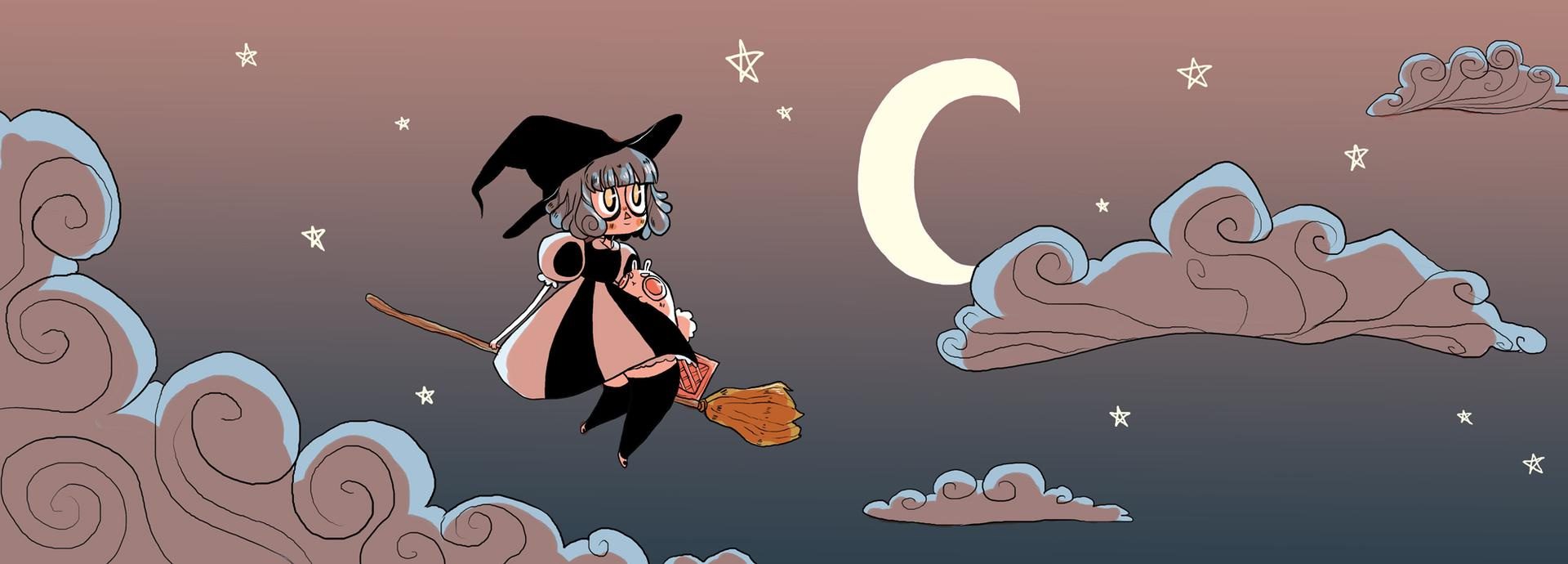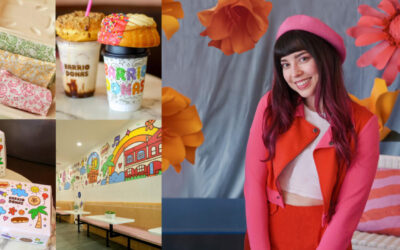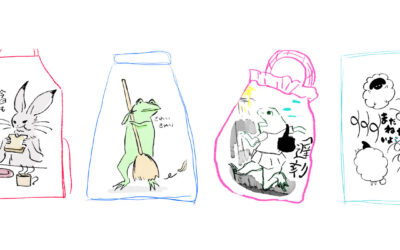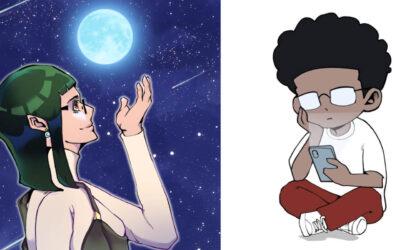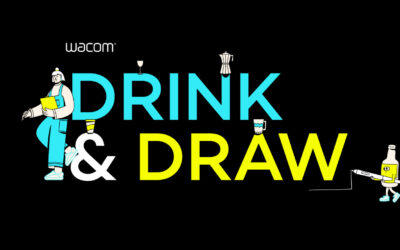Haley Newsome is an unusual success story.
Defying the popular image of the hype Youtuber who’s always trying to go bigger, louder, and more extra, she takes a Bob Rossian approach, making her content low-key and relaxing, but always delivering solid, actionable advice. She didn’t chase fame, she’s still surprised when she’s recognized in public, and although I can’t claim to know her, it seems her Youtube persona is essentially her real self: In conversation, she’s soft-spoken, analytical, and somewhat reserved, just as she is in her videos.
She’s also the story of a weeb artist who persisted and matured.
She started drawing comics as a toddler, and webcomics in her teens. Her first work as a kindergartner was about a rhinoceros whose horn was too big. “I didn’t know how comics work,” she says, “so I drew the pictures on the front and wrote the dialogue on the back.” She got into digital art at 14 on receiving a Wacom Intuos 4 for Christmas, doing a lot of Invader Zim, South Park, and anime fanart. Her high school webcomic, [REDACTED], which can still be found on [REDACTED],* was drawn in a much more “normal” anime style, but one with a distinctive twist that shows the beginnings of what she does now.
*I wouldn’t do this to someone.
She went north to study at Alberta College of Art + Design (now Alberta University of the Arts) where she majored in storyboarding and character design with hopes of getting into the industry. She ended up taking a different path, but character is still her passion and the basis of what draws people to her videos.
There, she started the brief gag comic Disasterpiece, which goofed around with many of the same themes about art school and artist life that she now covers more seriously in her videos, and her ongoing passion project Unfamiliar, which follows kitchen witch Planchette and her rabbit familiar Winston as they move into a haunted house and have to enlist the help of the town’s other magic users to exorcise it.
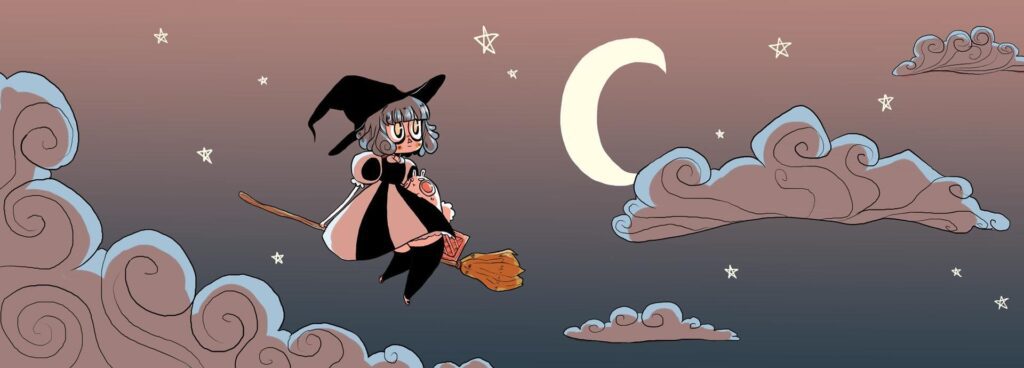
Her sister introduced her to Youtubing, and she started making videos under the name Lavender Towne in 2016, with a mix of tutorials, let’s plays, and the occasional speedpaint. But she found the most helpful videos were the ones that drew people in. Since then, she’s amassed a million subscribers, a number she says “still doesn’t seem real,” and over 121 million views.
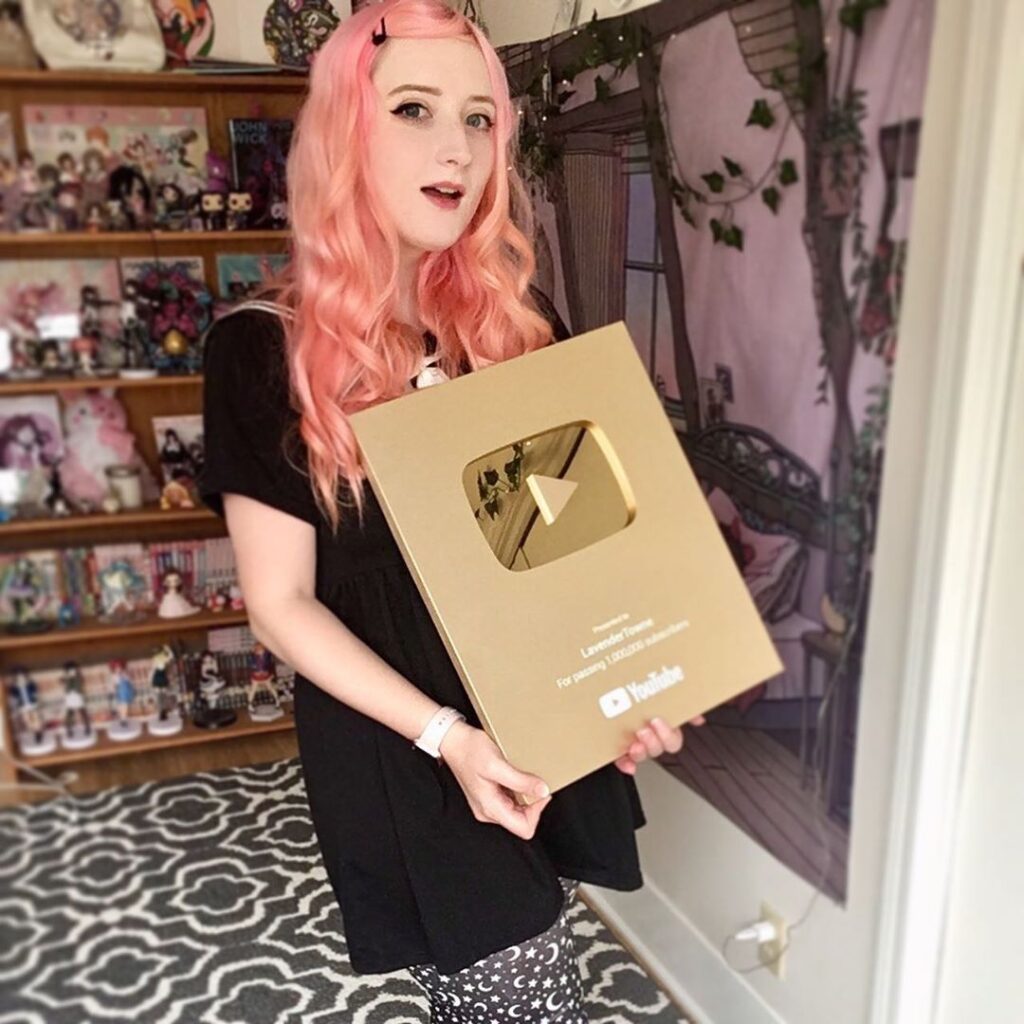
Haley with her Youtube platinum award in September.
She also breaks the art-tube tradition of focusing on technical skill, preferring instead to work in a simplified but instantly recognizable style. It’s characterized by fantastic color palettes and striking character designs but, in her words, “noodle arms” and “squiggles” for hands, drawing occasional criticism from people who think it’s unprofessional. But as we’ll get into, it’s fully intentional, and in fact, not as easy as it looks.
Lately, she’s also a Twitch streamer: She kicked it off in October with a week of streaming daily, then moved to Mondays, Wednesdays, and Fridays from 3-6 PST. She works on her Youtube content and comic, draws other people’s characters, and plays Jackbox games with the audience. I’ve been watching them for the past couple weeks, and I can confirm that they’re a lot of fun.
I spoke to her shortly after the first week. Our interview ran almost an hour late due to a computer failure on my end, putting me in a pretty appalling mood, but she was gracious and generous with her time.
So, icebreaker question: Who’s the best birdie, and why is it Ryouta?
What?
Do you know what I’m talking about?
…No?
Hatoful Boyfriend?
Oh my God, oh wow. [Laughs] Wait, where did you see that I played that game?
Research.
Well, look, I personally like the doctor the best.
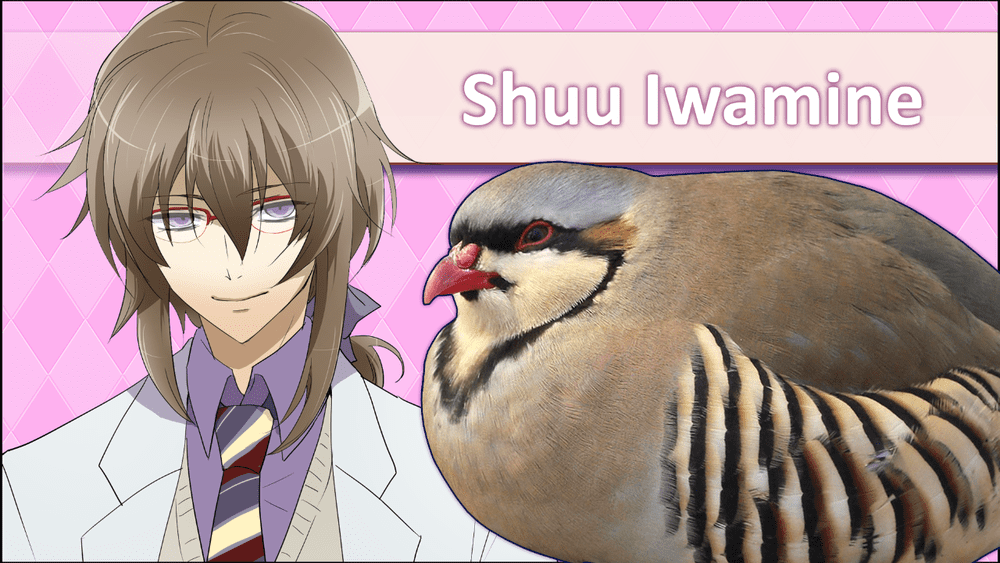
For anyone confused, Hatoful Boyfriend is a dating sim where you romance talking birds, as symbolized by anime boys. Image from the Hatoful Boyfriend Wiki.
Really? Interesting choice.
[Laughs] I’ve just never encountered a yandere route. Well, with a bird.
He’s such a terrible perso- …bird, though.
A little bit, sure. I suppose.
I mean, he does cook and feed you one of your other dating options.
Look, nobody’s perfect.
Anyway, first real question: Would you say your path to being a professional artist was fairly straightforward?
In some ways it was, but my destination was a little different. I expected it to go another way: I pictured I would be doing internships, then moving into the industry. So, as far as becoming a social media artist, that ended up being a surprise. But it happened straight out of art school, so in some ways, I went straight from school to an art job.
Did you always know that being an artist was what you wanted to do?
When I was really little, I wanted to be a veterinarian, and then a herpetologist. But after a while, I got into writing, and after some time of being really into writing novels and stuff, I decided I wanted to start adding art.
Did studying storyboarding in art school change your style, or help you loosen up and draw faster?
I had a lot of different classes, and a lot of them were not oriented that way: You were expected to refine and refine and refine—but whenever we had an assignment that was more about getting ideas out, I always really did a lot better with those. I think it was sort of a natural thing that ended up being nurtured by those classes.
And what was it about character design that spoke to you more than other types of art?
I liked thinking about how somebody’s past and their story would change them visually. It’s an emotional sort of logic, where you’re trying to make sure that people can get to know them just by looking at them. It felt like a fun puzzle to solve, almost.
So, story is the primary thing you’re thinking of when you’re drawing characters?
Yes. Story has always been my biggest thing. Weirdly enough, art is always a tool for me. I know a lot of people love art first and story second, but I think I’m the other way around.
And it seems like your actual drawing process is fairly simple? To confirm: You do a fast undersketch on one layer, then ink over it in the next one, then flats in the next one, and then hard shading on the last one?
Yeah, pretty much. It depends on what I’m doing, but that’s usually my thing. I never do two sketches; it’s always extremely loose so that I still feel like I’m drawing when I’m doing the inking part.
And is there anything about the process that doesn’t make it onto video?
Oftentimes, I’ll do thumbnail sketches to feel out the idea and see if it’s something that’s actually going to work. Because I noticed that when I didn’t do that, sometimes I’d realize that I hate the idea midway through doing it. But other than that, you’re seeing the whole process from start to finish.
Does your art style being less realistically proportioned also make it easier to work off the top of your head?
In some ways it does. Weirdly, at times the stuff that looks the laziest ends up being the hardest work. I’m kind of notorious for my spaghetti arms and stuff: A lot of people think I do them because it’s easier, but I actually think that drawing out a normal arm is simpler because you’re not trying to make perfectly parallel curved lines … But it does make things a lot faster.

Disasterpiece
That’s largely a digital problem though.
[Laughs] Yeah, when I’m drawing by hand, it’s not that bad.
But it seems like you’ve incorporated what I always thought was Photoshop’s most frustrating aspect into your art style: the lack of line stabilization.
It’s true. People said my style changed when they released the smoothing, because it was the first time in years that I’d had access to that feature. The wobbliness really has become part of my style now.
The way you do backgrounds is also very wiggly and stylized almost to the point of abstraction. Like, some people have pointed out that Planchette lives in a loaf of bread. What inspired that?
Pretty much. [Laughs] That comes from Unfamiliar being something that was therapeutic for me. Trying to make the backgrounds a character is the only way I could do them without hating them. And because I wasn’t planning Unfamiliar as a professional product, I was doing it to deal with the stress of art school in my free time, which I had barely any of, I didn’t put in the work. And now, canonically, her house is all wobbly. [Laughs]
I mean, it’s supposed to look like a skull… But it kind of looks like a loaf of bread.

Do you have a pre-prepared palette when you go into a drawing?
I basically don’t prepare much of anything before I start drawing. This is partially because lately, it’s been all about speed and getting things done as quickly as possible, so for stuff like palettes and references, if I feel like I need them, I’ll grab them while I’m working, but I usually try it without first.
Is color theory something you ever have to think about, or is it just second nature?
I’ve always felt like it was second nature. Usually, I have a pretty basic strategy, which is, “What color do I want to be the one that people notice first?” That one’s allowed to be the most saturated, and everything else I just try to cool down.
It’s all intuitive. Weirdly, when I was learning about theory, that was the first time I’d ever had trouble with color. I had a conflict about how things should go—I was trying to do everything “right” with all the different color schemes, and it just looked weird to me. I drew a lot of black and white stuff after my first color theory class because it was so difficult. [Laughs]
It just scared you away from color altogether.
[Laughs] Isn’t it obnoxious? I must’ve been a terrible student!
But would you say your art style’s accessibility is part of what makes you popular as a teacher?
I think so. When I first came into the Youtube art space, [tutorial videos] had sort of a negative reputation. A lot of people would come to these artists like, “Hey, how do I make my art better,” and a lot of their reaction was like, “You’ve just gotta practice!” I remember thinking, “That’s such obvious advice, it would be cool to be able to make tutorials that help people in a bit of a more direct way.” And my art’s not very intimidating, so it does make it easier for people to approach it. …I mean, I hope so!
Do you know what made your channel take off, though? Because it seems like you had a pretty meteoric rise from 2016 to 2017.
I don’t know specifically what happened, but my “Do This, Not That” series seemed to walk the line … It seems controversial and then, when you click on it, it’s just me trying to be helpful, and I think that was a recipe for success in some way. Those videos really popped off.
The most popular of the early series.
After that, it was mostly experimenting with stuff that I hadn’t seen other art Youtubers doing, like correcting books. Stuff that I thought would be entertaining.
Do you have an idea of what you would call “your average viewer?”
I used to think so, but as I’m meeting them more in real life, I’m realizing that I have a lot of range in my audience, which makes me really happy. I get a lot of comments from young girls who have big dreams about going to art school and becoming professional artists, but I’ve met all kinds of different people who follow my channel, and I think the only unifying thing is that they really like stylization and they really like story.
And do you have any advice for aspiring art Youtubers?
Honestly, I would say my biggest advice is… Try not to do what I’m doing. Try not to do what any of the art Youtubers are doing. That’s the secret. Youtube is a place for novelty, and I think that’s the reason my channel did well: At the time, there weren’t many people who were using art as a tool to talk about stuff rather than just doing speed drawings over music or reviewing pencils; those two things were all art Youtube was about. So try to find your niche, and find something that I’m not thinking of and that the rest of my peers aren’t thinking of. I think that’s the only way to make it nowadays. You’ve got to do something new.
I wanted to get into your influences. Going through the things you’ve said you were inspired by, I can see where you took small elements from each one. If I can list them off… It seems like the bases for your current style are Invader Zim and Gorillaz?
[Laughs] Oh yeah, you’ve got it.

Zim fanart from 2009, and 2019 redraw.
Did the noodle arms and strange eye shapes come from Zim?
They didn’t go quite as deep into doing the weird symbols in the eyes, but pretty much. And the super-exaggerated proportions and certain sharpnesses that I still use a little bit, definitely came from Zim.
Where did you get the idea for the symbols in the eyes?
That was actually from watching those really old jazz cartoons and the original Betty Boop stuff. I liked how their bodies would… There’s an animation short that I just love where Betty Boop is being carried around in a glass coffin and literally, the singer is just morphing into different things as he’s walking and talking. I like that ability to communicate something, and I thought that would be good for comics.
Oh, that’s the Koko the Clown one with Cab Calloway!
Yes! It’s amazing.
What about FLCL?
I love FLCL. That was super influential really early on.
The manga is actually what I was into first, just because it looks like such a mess, but at the same time, it’s so clear. I loved the fact that it looked like it was barely holding itself together, but it had the same level of flow that really clean comics do. And that it didn’t feel like it had to explain itself to you—there was something confrontational about it in that way. It was like, “This is just happening, this is the universe we’re in, and we’re just gonna go.”
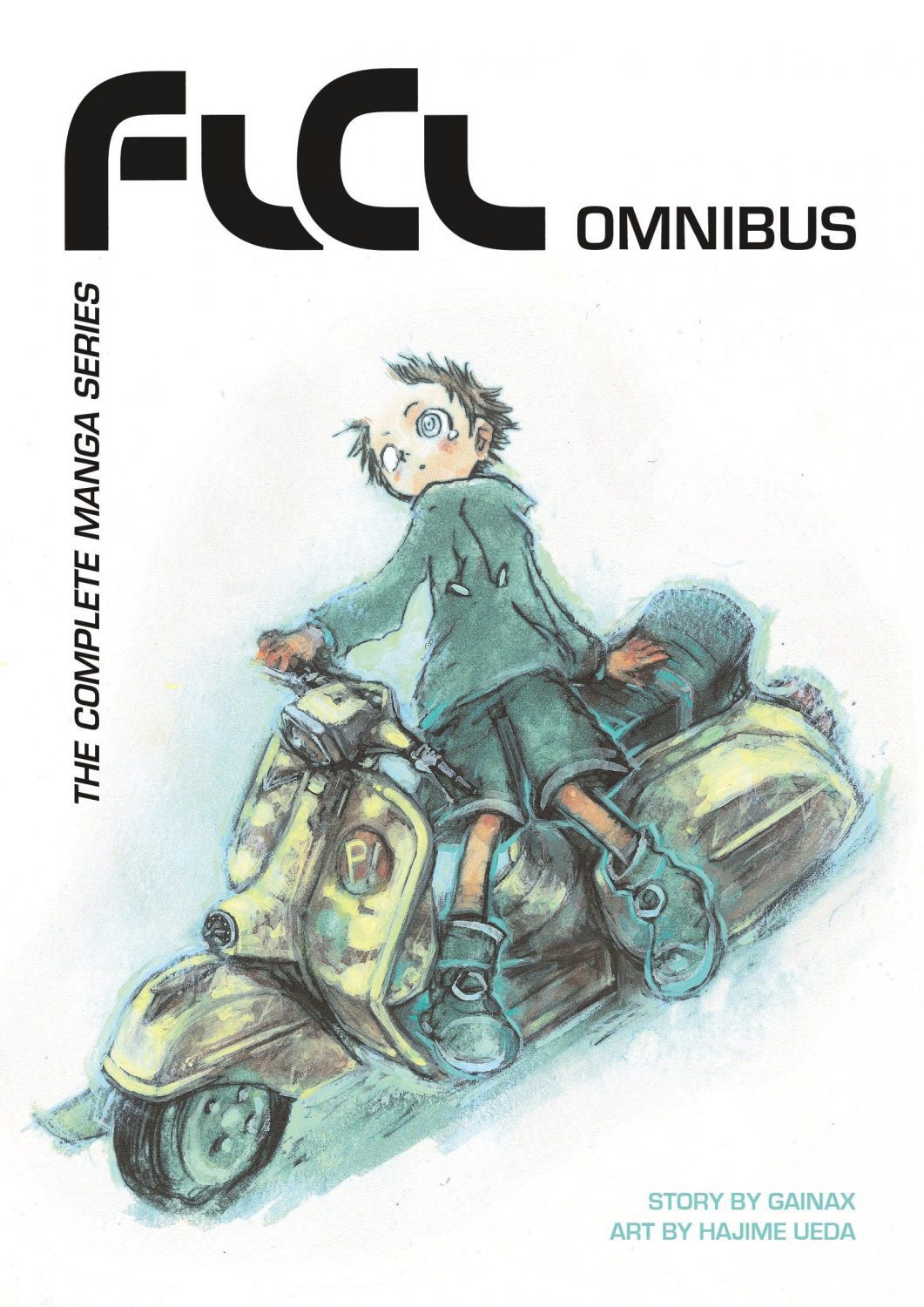
Image from Amazon
It’s amazing that you mentioned that, because I had that exact same thought while I was researching this interview. Getting back to accessibility, I read it too when I was twelve, and it was the first manga that made me think, “Oh, this is attainable! I could learn to draw like this!”
Yeah! It’s amazingly beautiful art, but it feels doable.
Scott Pilgrim?
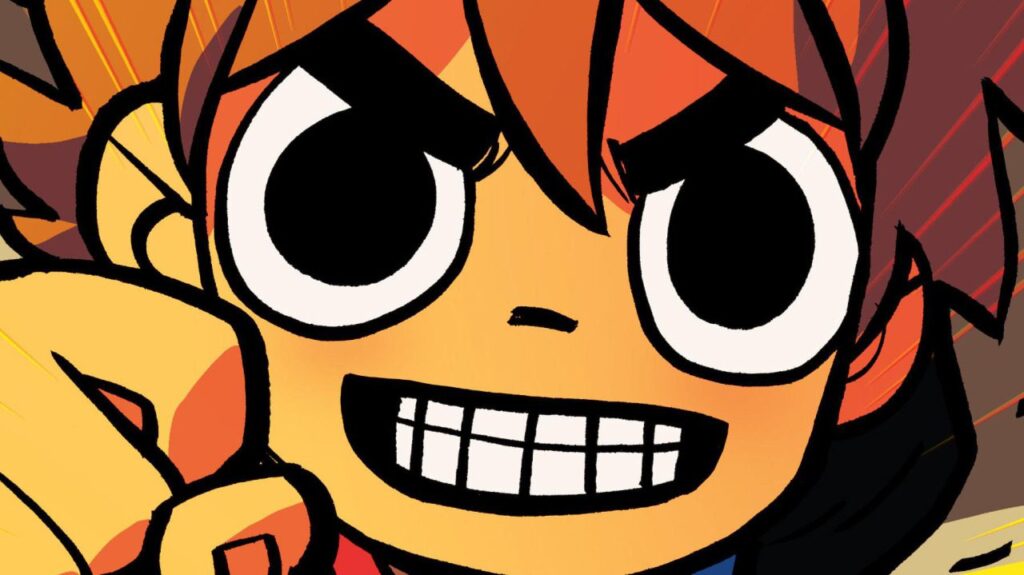
Image from Bryan Lee O’Malley
Big time. Same kind of thing, I was like, “Wow, I think I could actually make comics.”
I found an unusual one: Superjail?
CW: Cartoon gore.
[Laughs] Wow, you really do your research, huh? …Yeah, I had many edgy phases in my life, and Superjail definitely fed into everything I was into at the time. It was bright but super violent, and the animation, isn’t it at a super-high frame rate or something? It just didn’t look like anything that was on TV at the time.
Note: I checked afterwards, and this is true. Superjail! was drawn at an astounding 36-40 frames per second depending on the scene, over twice the industry standard for computer animation and thrice that of hand-drawn cartoons and anime. Back in the day, AKIRA and The Thief and the Cobbler were considered insane for having 24.
Wes Anderson?
I’m a big fan. All of his stop-motion and a lot of his live action stuff are some of my top movies of all time.
It seems you take a lot of color inspiration from him, but not his obsessions with front views, leading lines, and symmetry.
I feel like I would do more symmetry stuff, but I do things too quickly; I’m not as meticulous as him. But I do like the pastels.
Oh, and in Moonrise Kingdom, there’s a scene where a dog gets shot with an arrow, and instead of showing that, they flash to an image of an arrow and a few different sounds. That inspired me a lot. I like that he’s willing to do things that are unconventional.
TW: Animal cruelty.
It seems like you take a similar approach in that you often skirt around creepy things or horror in your work, but aside from the Creepypasta series, you don’t go overtly dark. You like the idea of not directly showing things like that, but insinuating them?
Yeah, it’s interesting because usually a filmmaker would revel in that action-oriented violent moment, and instead, he just doesn’t show it at all. It was a sort of restraint.
[Those are] my sensibilities in general. When I first started doing Unfamiliar, for example, I wanted to create a world that was very soft, where nobody’s a bad person, but there’s an undercurrent of dark things throughout all of it. It’s like being passive-aggressive with dark themes [laughs]: I’ll never put it on the surface.

How about pastel goth and lolita fashion? Is that where you get a lot of your outfits and color palettes?
For sure. I was really obsessed with gothic lolita.
And it seems like lately, you’ve been taking a lot of inspiration from Japanese and Korean pop art, like superflat and animation memes?
That’s interesting, a lot of people don’t pick up on that. Anytime I had to do a research project in school, Japanese pop art was my main obsession, and I definitely think it leaks into my art. Junko Mizuno, Murakami, and a few other artists, I was definitely inspired by.
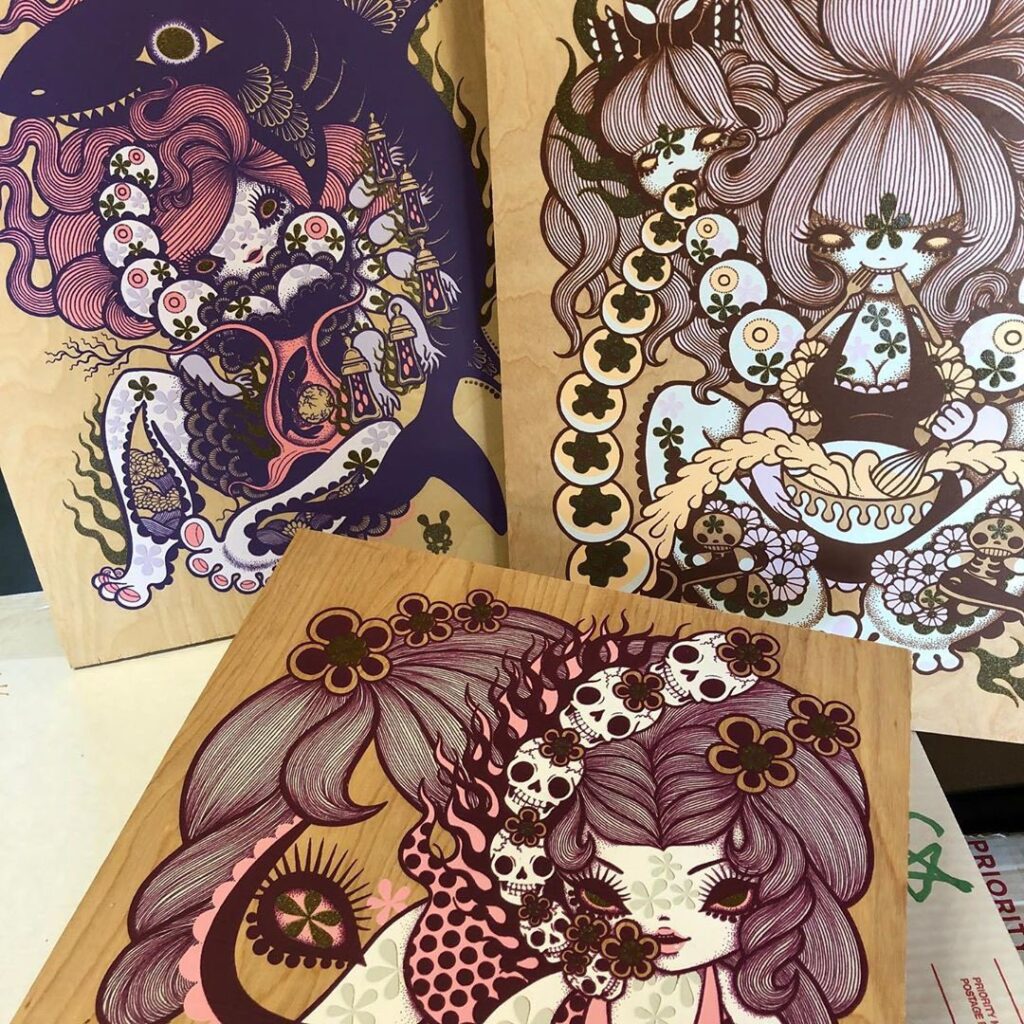
Junko Mizuno wood prints. Image from Twitter.
You spent a few months in Japan. How did that happen, and what did you do while you were there?
My partner, who I’m living with, had a job that required him to go to Japan [to work on a game], and I’ve been wanting to go there for so long, so I was like, “I work on the internet, we might as well go together.” And I basically just did all my Youtube stuff from there.
Where in Tokyo were you?
For the first bit, we were in Shibuya, and after that, we stayed in Shinjuku for the rest of the three months.
Nice! Would you say Shibuya and Harajuku fashion rubbed off on you while you were there?
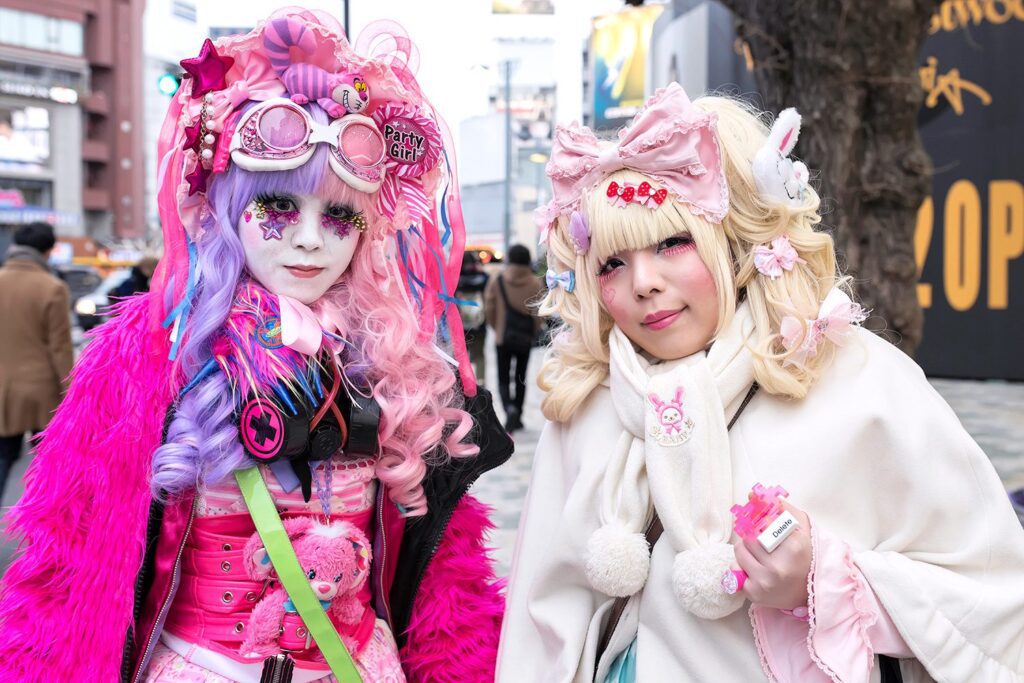
Models in Harajuku several years ago. It and Shibuya are two adjacent wards of Tokyo considered Japan’s trend capitals. Image from Tokyo Fashion.
A little bit. I’d say the fashion scene in Japan has cooled down a lot since when I first got interested in it. Harajuku wasn’t as “exploding with weird stuff” as I’d come to expect, and I’ve seen a lot of fashion blogs I’ve followed saying things are getting more toned down with the colors recently, partially because a lot of the pop-up shops are getting edged out by like, Forever 21. [Laughs.] And it’s changing the fashion around there, which is sad.
But I saw some really beautiful things when I was there. It was interesting [comparing it to] what my expectations were from when I was a kid obsessed with Japan: The reality of it was just as interesting, but in a lot of different ways. I ended up being more inspired by the architecture than big, crazy fashion or the weird stuff people would write articles about.
So many novels and things from Japan employ magical realism, and when I went there, I understood why. You’ll be walking down a busy street in the middle of Tokyo—it’s like New York, it’s bustling, there’s a million people—and you step to the side into an alley, and suddenly all the noise is gone. You walk a little ways, and then there’s an old-fashioned shrine in the middle of the city. It’s like, “What? Where am I?” The constant mixture of ancient, beautiful things and all this modern stuff that looks like it was built yesterday was so fascinating.
Going forward, what are your goals?
Honestly… I recently hit a million subscribers, and that was my biggest Youtube goal since I started. I didn’t even think it was possible. But ever since that happened, I’ve been feeling weirdly like the wind’s been taken out of my sails. I’m like, “Well… What do I do now?” It was a weird moment, because obviously I was really happy, but at the same time, I’m starting to feel like I want to try other things in addition to Youtube.
I really want to do more comic work, because it’s been my side project that always gets pushed off whenever I’m running out of time. If I could make my story more important, that would be great.
Are there any other downsides to being a Youtuber?
I think the hardest part for me lately is that Youtube rewards doing things quickly—you want to have as many drawings per video as you can, and you want it to be fast and exciting for people—and that’s baked itself into the way that I work now. I feel like I’m always in a hurry and I can never really finish what I’m drawing. That’s been my biggest frustration with that style of content creation.
I [normally] like it because I am someone who likes to not fuss over things too much and just get my ideas out there, but it’s getting a little fast even for me. And it’s harder for me to look back on my Youtube stuff and feel as proud as I do of a comic or something like that.
Speaking of that, you give a lot of advice for being noticed on social media, but do you ever worry we’re getting to the point where algorithms are gatekeeping what art we get to see instead of helping us find what we want to see?
Yeah. One of the things I worry about with the algorithms is that it seems like they’re bubbling people. It seems like a lot of these sites just want you to keep consuming the same stuff over and over, and I do wonder how people are going to stretch their legs and experience new things when our media is just trying to give us as close to what we already like all the time.
It used to be, when I would [watch] a video that’s different from what I’d usually watch: a soap-cutting video or something I’d never usually click on, the recommendations next to it would be other soap content, so I’d be able to go down a rabbithole with that. But now, it seems like if I click on something even slightly out of my comfort zone like an ASMR video, it’s going to send me back to drawing stuff immediately. It wants me back in my normal videos.
I’m basing the get-noticed videos off of my own experience because I don’t really know else to help. [Laughs]
Do those frustrations limit you or motivate you?
I think they motivate me. I never would’ve seriously tried Twitch just a few months ago, but the fact that I’m realizing there’s an upper limit on how much fun I can have doing the same thing all the time is forcing me to try new things.
It’s hard to complain about Youtube because it’s been such a good job to me. It’s been so fun, and I get to do so much of what I would’ve wanted in my free time and make that my job, so it’s hard to feel bad about it. But at the same time, I think it’s healthy to be constantly trying to do new things, and pushing myself to keep going to places where I’m not going to automatically get noticed, and see if I can build things up again in new spaces.
You’ve said that one of your other dreams is to be the showrunner for an animated series. What would you want it to be about?
There’s a story that almost got picked up right when I was about to graduate from school, and I had to choose between it and Youtube. It’s been haunting me ever since. It’s the same one I’d want to make into a show, because I have a lot of faith in it, and I think it would work really well episodically:
It would be a kids-to-teens-oriented show about Girl Scouts—I’d probably call them something else—but basically, it turns out that when you get all the patches, there’s a secret agent level. Three girls get all the patches at the same time and they make this secret force of Extreme Elite Girl Scouts, and they go on adventures. But it turns out one of them has gone rogue: [She’s] doing yarn bombings and all these DIY crimes throughout the country, and making the company look bad.
They don’t know who it is, but it has to be one of them because she knows too much to be an outsider. So these girls have to find the rogue Girl Scout somewhere in the country, [and they’re doing] all this detective work.
That sounds really good. When you say it almost got picked up, do you mean published as a comic, or—
Yeah. I was looking at the time demands, and my Youtube had just started taking off, and I decided to do that instead. Which I don’t regret at all, but…
Finally, walk me through the creation of your greatest work: Gingerbread Planchette.
Sure! For the first step, you’ve gotta get your gingerbread dough that your sister made, then make sure that you don’t cut it out or anything—that’ll look too nice. Just grab lumps and smash them down with your fingers, then put black currants in for the eyes. That’s pretty much how you do a Gingerbread Planchette!
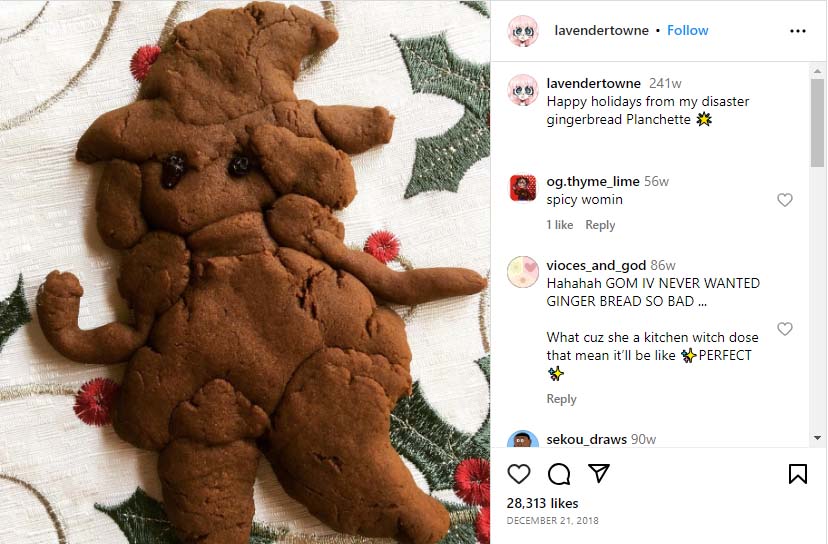
Lavender Towne’s Youtube Channel can be found here. Her Twitter is here, and her Instagram is here. As of this writing, she’s streaming on Monday, Wednesday, and Friday from 3-6 Pacific Time, here.
Questions and answers edited for clarity and concision with permission.
About the Author
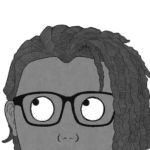
CS Jones is a Philadelphia-based freelance writer and illustrator. He spends his spare time listening to Spotify and falling down Youtube rabbitholes. Someday, he’ll finish that graphic novel. In the meantime, his work is best seen at thecsjones.com or @thecsjones on Instagram.

